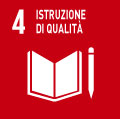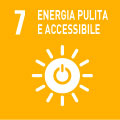- Docente: Norberto Pignatti
- Crediti formativi: 4
- SSD: SPS/04
- Lingua di insegnamento: Inglese
- Modalità didattica: Convenzionale - Lezioni in presenza
- Campus: Forli
- Corso: Laurea Magistrale in East European and Eurasian Studies (cod. 5911)
-
dal 28/04/2025 al 08/05/2025
Conoscenze e abilità da conseguire
This module analyses the complex relationship between different energy players in the Caucasus and Eurasia. Upon completion of the module, students will understand the context and the current situation (trends, problems) in the energy sector in the referent geographic area. They will also be able to acquire information about energy issues and security effectively.
Contenuti
The course will begin with a brief discussion of the key role that access to energy sources and the ability to use them to produce goods and services has historically had in ensuring the functioning and development of human societies , and how the survival of modern economies is inextricably linked to their ability to constantly satisfy their energy needs. We shall discuss next the fundamental role that global energy markets (particularly those of fossil fuels) played and play in satisfying the increasing world energy demand, emphasizing the main characteristics of the different energy markets.
The course will then focus on the Eurasian region, starting with a quick review of the demographic and economic changes that have characterized the last decades. These changes have led to dramatic changes both in energy demand and in energy supply trends - and, as a consequence, to changes in regional and global energy markets - that have greatly affected the evolution of the global geopolitical scene. In this part of the course, we will be identifying the main Eurasian players, both on the supply side (net energy exporters) and on the demand side (net energy importers), building the foundations for the third part of the course.
In the third part of the course, we will formally introduce the concept of energy security, as it is generally represented by the literature on the topic, both from the point of view of the net importers of energy and from the point of view of the net exporters of energy. We will then analyze the cases of some of the main players in the Eurasian region (China, India, European Union and Russian Federation). We will see how these actors define their own objectives in terms of energy security and how they pursue them in practice, both in the short, medium and long period, in light of the changing conditions that characterize the international context. This will allow us to highlight both the potential points of convergence and those of competition among the different actors, both internally and outside the Eurasian region.
In the fourth and last part of the course, we will focus on the Southern Caucasus, from the point of view of the countries of the area (Armenia, Azerbaijan and Georgia) and those of China, the European Union and the Russian Federation. We will begin discussing briefly the situation of each country of the Southern Caucasus from the demographic, economic and energetic point of view, as well as the relations between the three countries and the neighboring countries, particularly with the European Union and the Russian Federation. We will then reconnect to the previously discussed topics, analyzing the strategic importance of the South Caucasus in the context of the growing competition between the main Eurasian actors to ensure their own energy security, and the possible implications of this competition for the countries of the Southern Caucasus and for all the countries involved.
--------------------------------------------------------------------------
Course outline:
Class 1: Introduction to the course and overview of key concepts
Class 2: From low to high energy civilization
Class 3: Overview of the global fossil fuel markets and their role in satisfying the increasing world energy demand
Class 4: Demographic and economic trends in Eurasia: identifying the main players in regional energy markets
Class 5: What energy security means for net energy exporters and for net energy importers (and how the respective policies to ensure energy securities can complement or obstacle each others)
Classes 6 and 7: Energy Security Challenges and Policies in Eurasia. A review of the challenges faced (and of the policies developed, in response) by China, European Union, India and Russian Federation.
Class 8: Demographic and economic trends in Southern Caucasus
Class 9: Energy Security challenges and geopolitical trends in the Southern Caucasus
Class 10: Looking ahead: the key role of the South Caucasus in the pursuit of energy security in the Eurasian context
N.B. A detailed list of the introductory readings to each class will be published prior to the start of the course.
Testi/Bibliografia
Key resources:
Fouquet, R. (2009). “A brief history of energy”, in International Handbook on the Economics of Energy. Edited by: Evans, J. and Hunt, L. C., Chapter 1
BP (2002, 2012, 2022). BP Statistical Review of World Energy.
EI (2023). Statistical Review of World Energy 2023.
IEA (2022). World Energy Outlook.
Pignatti, Norberto (2023). "Energy Security Challenges and Opportunities for the Country of Georgia". Comparative Southeast European Studies, Vol. 71, No. 1, 2023, pp. 119-133. https://doi.org/10.1515/soeu-2022-0031
Smil, V. (2000). “Energy in the Twentieth Century: Resources, Conversions, Costs, Uses and Consequences”. Annual Review of Energy and the Environment 25: 21-51.
Smil, V. (2017). Energy and Civilization - A History. The MIT Press, 2017. Chapters: 1, 7.
Tibold. A. and Cillessen, V. (2006). Geopolitics, energy security and the South Caucasus. Clingendael Institute.
N.B. additional readings will be suggested by prior to the beginning of the course.
Metodi didattici
Each class will be opened by the professor and/or by students’ presentation based on introductory reading.
In each class, the topics reported in course outline will be discussed with all the students on the basis of the introductory/suggested readings.
Documents scheduled for presentation must be read by all the attending students in advance, in order to guarantee a fruitful discussion.
Modalità di verifica e valutazione dell'apprendimento
Oral exam. Students are expected to analyze and discuss in details the topics that have been discussed during classes with appropriate references to the sources offered by the readings. The ability of analyzing and linking theoretical foundations, empirical evidence, and real-world policies and to will be highly appreciated.
Strumenti a supporto della didattica
The attending students will be provided with the power point presentations, short videos and additional material that will be analyzed during the classes.
Orario di ricevimento
Consulta il sito web di Norberto Pignatti
SDGs




L'insegnamento contribuisce al perseguimento degli Obiettivi di Sviluppo Sostenibile dell'Agenda 2030 dell'ONU.
